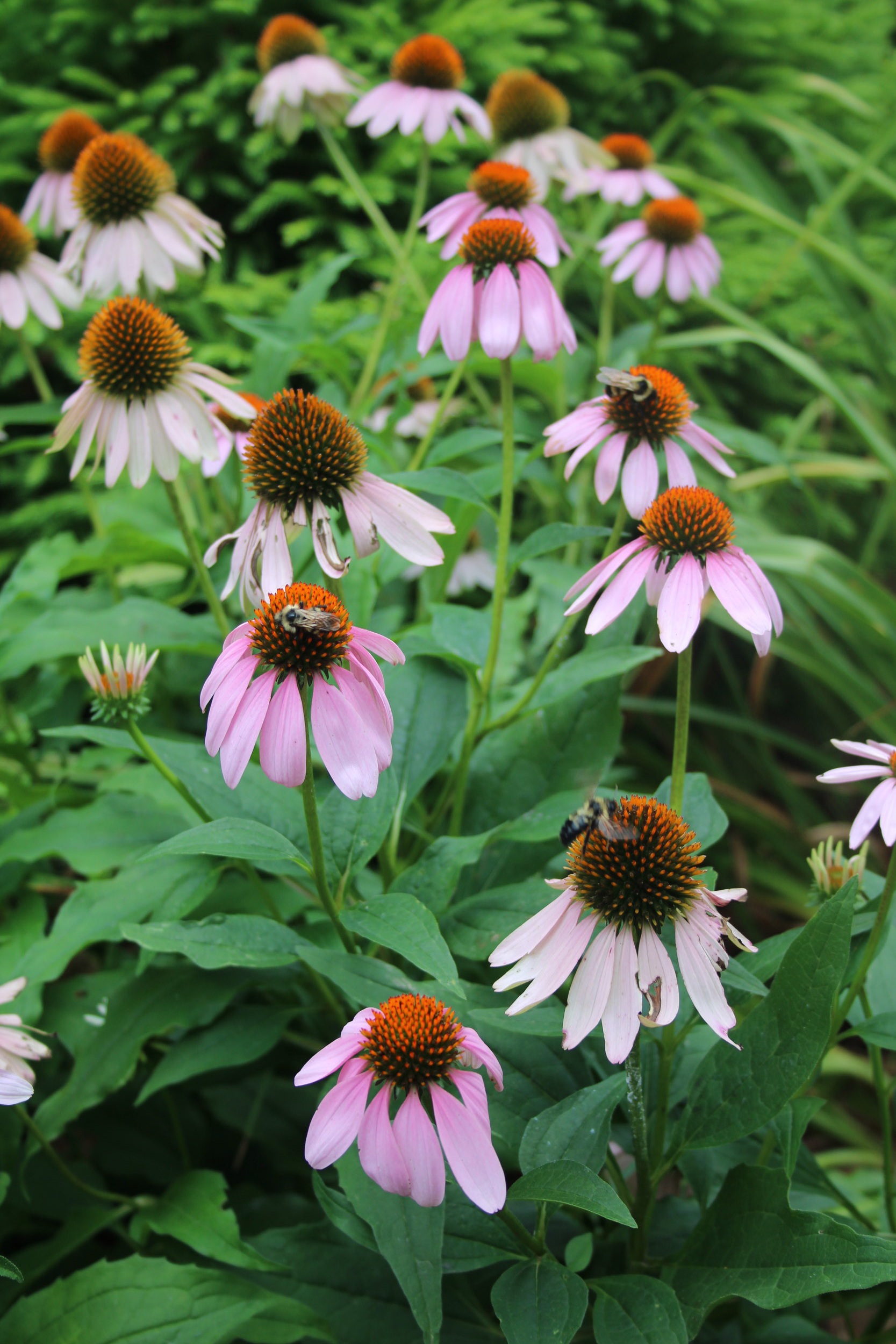Poor Blackberry Lily experienced an identity crisis. For years it was Belamcanda chinensis. Then in 2005, pesky taxonomists examined the DNA sequence and determined that it is not a lily, not a blackberry, and not Belamcanda. Instead, this freckled redhead of the plant world has a new identity: Iris domestica.
Regardless of the binomial name, Blackberry Lily is one tough customer. Like most other members of the Iris family, it has swordlike, ten-inch-long leaves that rise like fans from a rhizome (bulb). The rhizomes prefer well-drained soil and full sun, and are hardy in zones 5 through 10. Plants will rot in wet soils; they are drought tolerant once established. Blackberry Lilies flower in mid-summer and will continue through early autumn. Five-petal blooms are typically orange with a touch of yellow in the center and attractive red spots, which gives rise to another common name, Leopard Lily. Flowers are held above the leaves atop thin stems and are so profuse in number that the plants are best given support (think circular hoops like those used for peonies or dahlias) so they are not toppled by weight or summer thunderstorms.
Belamcanda – oops! I mean Iris domestica – rhizomes prefer a planting depth of five inches. Plants aren’t choosy about soil type or pH. They will be a bit shorter when grown in poor, dry soil. The rarer yellow form is shorter and requires more moisture and a richer soil than the typical orange flower.
Blooms result in clusters of shiny black seeds that look exactly like large blackberries. Left alone, plants will self-seed into large colonies. Plants look best when they are not allowed to become congested, so be generous and share divisions with your gardening buddies. Tattered or yellow leaves can be removed any time of the year. Both flowers and mature stems are used in flower arrangements.
Do not allow your cats, dogs, horses, or kids to ingest the flowers or blackberry-look-alike seeds; they are toxic. Flowers attract butterflies and are rarely bothered by other insects or diseases. This low-maintenance plant is easy to grow.
A Blackberry Lily bloom. Notice the numerous buds hiding behind this flower.
Blackberry Lily seed pod. "Blackberry Lily (DSC_0025), the blackberry." by Li-Ji is licensed under CC BY 2.0










